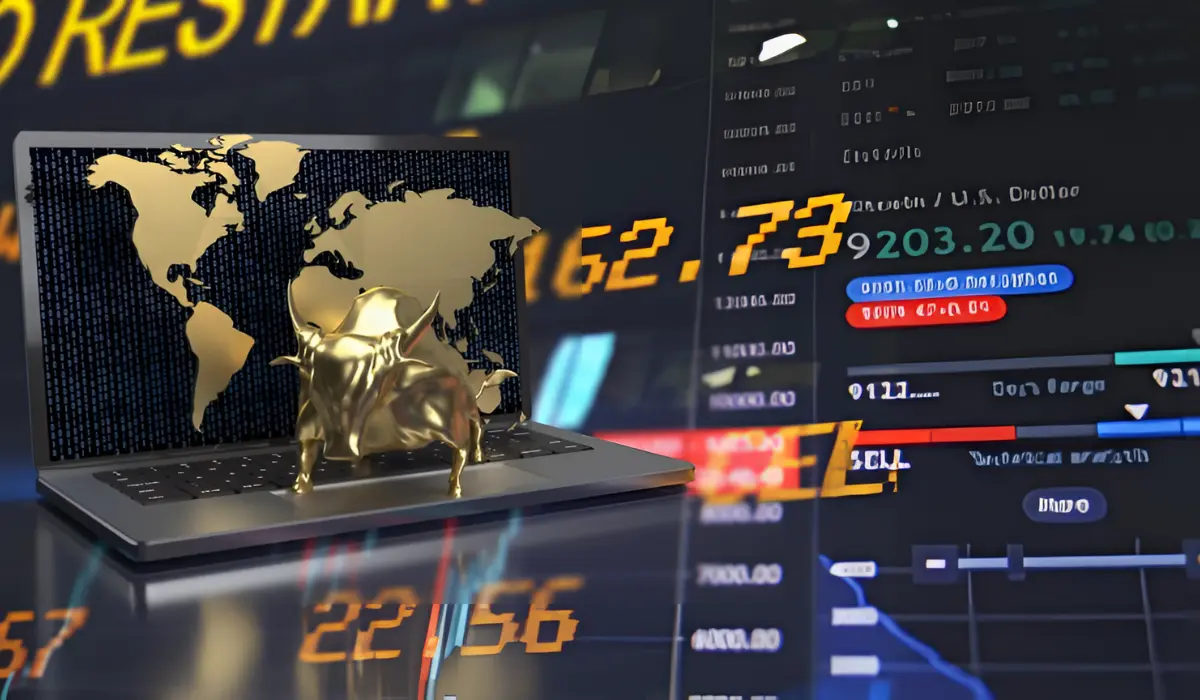Exchange-traded securities and crypto assets are two commodities that are often mistaken for the same by new traders, each with unique features and market dynamics. While exchange-traded securities, such as stocks and ETFs, are regulated financial instruments tied to company performance, crypto assets operate in a decentralized environment, characterized by high volatility and minimal regulation. Understanding these differences is essential for investors navigating today’s complex financial landscape.
Exchange Traded Securities

Exchange-traded securities (ETS) or Exchange-Traded Funds (ETF) are a collection of bonds, stocks, and other assets like commodities. In crypto, ETFs represent a blend of traditional ETF structures and the burgeoning world of digital currencies.
Unlike conventional ETFs that track indices, commodities, or a pool of assets, crypto assets focus on cryptocurrencies or a pool of cryptocurrencies like Bitcoin, Ethereum, etc. These ETFs provide direct exposure to a specific cryptocurrency’s market price. It is like buying the currency itself but without the concerns or responsibility of managing a digital wallet.
Tracking the price of cryptocurrencies is how crypto ETFs are operated. A cryptocurrency ETF will reflect the price movements in that particular currency like traditional stocks. There are reports that it may trade at a higher or lower value compared to the actual market price of the assets which leads to the variation in the ETF’s price in comparison to its underlying asset value.
By investing in crypto ETFs, it simplifies the entry into the crypto market. This allows investors to leverage the growth potential of these currencies while diversifying their portfolios. Crypto ETFs also operate within regulated financial systems offering a level of security that is not necessarily in direct cryptocurrency investments.
The only risks involved in this may be the volatility and tracking errors. Even though ETFs offer a regulated route into cryptocurrency investment, they still carry inherent risks which lead to potential disparities in expected versus actual investment returns.
What to Know About Etf Outside of the Crypto World?
A common form of ETF is an Index-based ETF. These track the performance of the underlying index, some of which follow the stock market, which in turn gives diversification and access to many stocks. ETFs can bought and sold through the ASX, or the Australian Securities Exchange during the trading day just like buying and selling shares.
Any investor could directly invest in Commodities like the Nifty Fifty Index or Sensex 30 via ETF. In the line of cryptocurrency, ETFs act as a pool of currencies that are collectively sold or bought. These could be cryptocurrencies, NFTs, and other stocks. Since ETFs are pools of shares, we could directly purchase ETF units into our demat account.
The tradability of the ETFs is called liquidity. It is the ability to buy and sell investments easily. It plays a role in the ability to buy and sell the holding in the user’s portfolio. Liquidity typically occurs at a price similar to the fair value of the investment. The level of liquidity in an investment is one of the crucial things to consider while making an investment. This will mean that a buyer who made a profit initially will be able to sell with the same profit while selling.
There will be differences in liquidity in ETFs and shares. In shares, while making an investment, the on-screen volume is what is considered. For single shares like BHP or CBA, the liquidity and trading volume are proportional to each other and hold a strong connection. This is because there is a fixed number of BHP or CBA available for crypto trading at any given time, which in turn makes the liquidity and trading volume equal.
Many mistake ETFs for Index Funds. While buying shares from ETFs, the user has to have a Demat account and have to buy directly from the stock market whereas Index funds could be bought from any mutual fund company. There are no charges for investing in ETFs but that is not the case in Index funds.
A common misconception in ETFs is that if you do not trade a certain number of units per day, it means that ETFs are illiquid and that this has to be avoided. The trading volume for the ETF that you see on the screen is not the actual volume showing the ETF’s true liquidity. Am ETF can still have high liquidity even if the trading volume is low as ETFs are open investments. This means the amount of ETF units on offer can expand or shrink based on the number of buyers and sellers in the market.
Crypto Assets
Crypto assets are a digital representation of value or a right that can be transferred or stored electronically using distributed ledger technology or similar technology. Basically, they are assets used to make transactions. The main crypto assets are considered to be cryptocurrencies and NFTs. NFTs are the short form for Non-fungible tokens. These are “considered” assets like a piece of art, digital content, or video that have been tokenized through blockchain.
NFTs are like a unique identification code created from metadata through an encryption function. One example is the bored ape meme. The mem was initially viral over social media and later the owner uploaded this as an NFT via blockchain.
Although this had an initial hike, the fame soon faded in the market as unlike, real paintings, it could be replicated within the same resolution and other aspects, making it lose its uniqueness. Real paintings cannot be replicated anymore as they cannot be made again with old accessories and more but digital art could be replicated even with the same resolution.
Cryptocurrency is the most well-known crypto asset that can be exchanged for products or even services like fiat currency, or even as a store of value. Cryptocurrencies are generally not considered to be securities, therefore investors do not have to pay taxes or obey any security laws for them. There is also no limit to the amount you can buy or sell in cryptocurrencies.
So if you directly buy a currency and take immediate delivery of the cryp[to an asset into your digital wallet, this transaction is not subjected to any law. But if you trade this currency on a CTP, the CTP holds your cryptocurrency in your wallet on its platform which creates an ongoing contract based on the value of the underlying asset and this contract will be subjected to security laws.
In conclusion, by now you might have understood that the difference mainly is in the process of how both transactions work in ETFs and Crypto assets. Crypto assets are a pool of cryptocurrencies and NFTs and ETFs are security funds and it has a fund manager that charges a fee that may cause performance to slightly differ from holding actual crypto. Even when buying crypto, the fee will be typically lower than the actual crypto.
